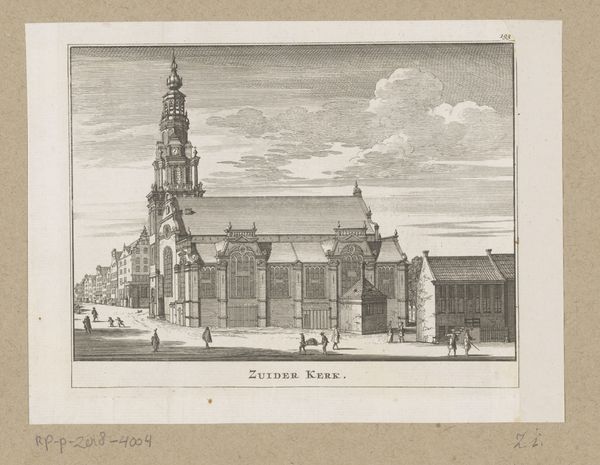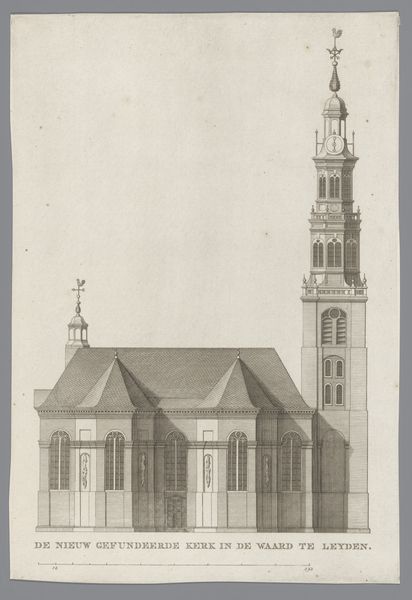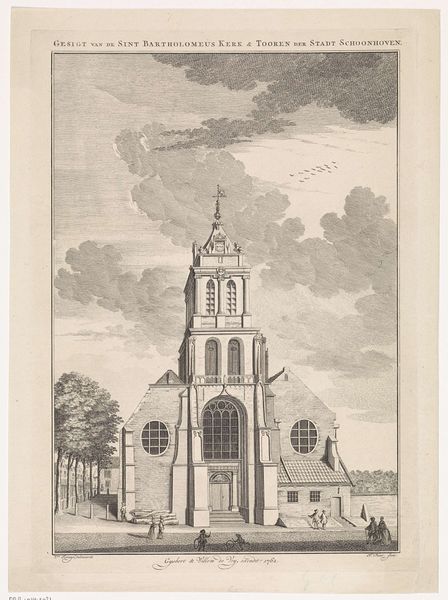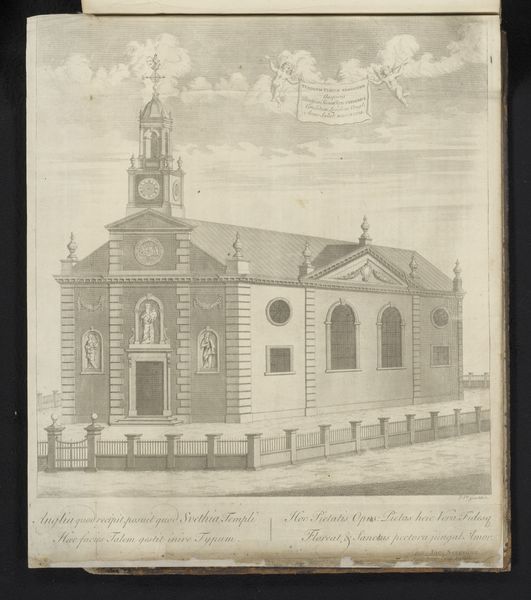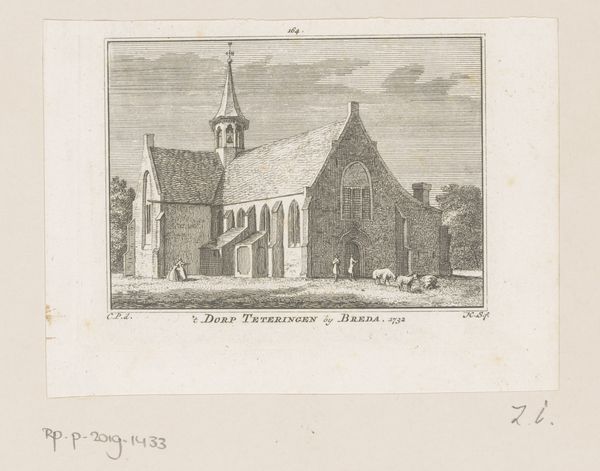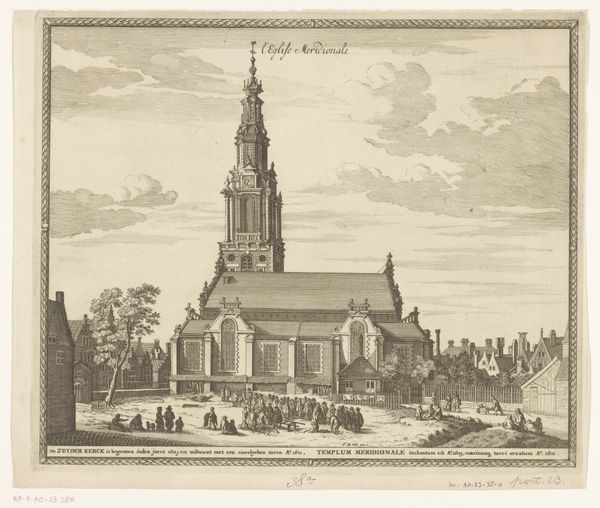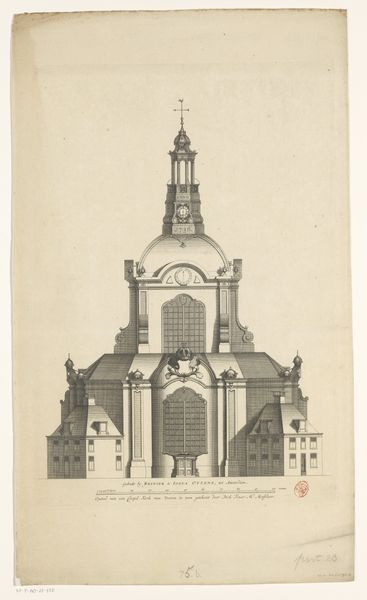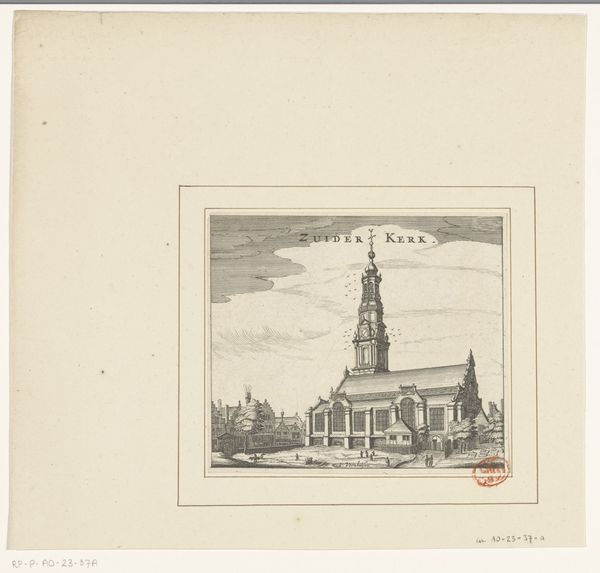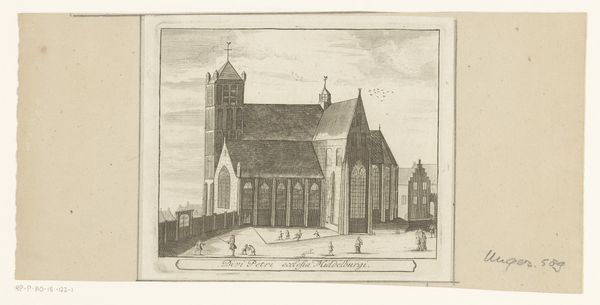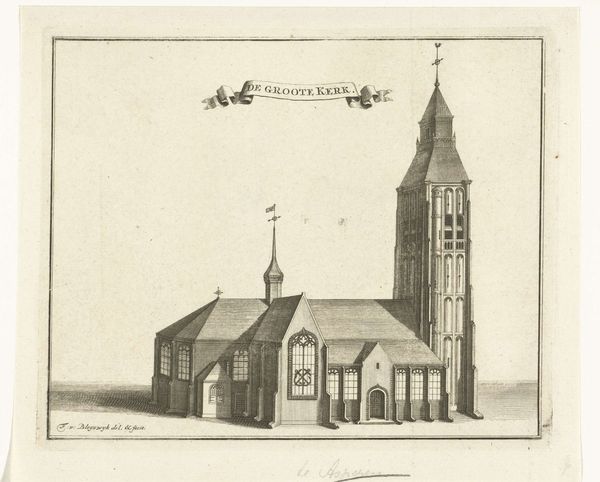
print, engraving, architecture
#
baroque
# print
#
cityscape
#
engraving
#
architecture
Dimensions: height 157 mm, width 207 mm
Copyright: Rijks Museum: Open Domain
Curator: Let's examine this print, "Sint-Martinuskerk te Groningen" dating from around 1720. The artist, Jacobus Harrewijn, captured the essence of this important architectural landmark using engraving techniques. Editor: My first impression is one of austere grandeur. The tall spire dominates the composition, but the monochrome engraving gives it a rather solemn and perhaps slightly oppressive mood. Curator: Indeed, Harrewijn's print serves not just as a portrait of a building, but also a record of the artisanal practices of his time. The labor involved in meticulously engraving such fine lines onto a metal plate speaks to a pre-industrial mode of artistic production. Consider the accessibility this medium provided in circulating images of power and influence, like that embodied in this important religious structure. Editor: Absolutely. And viewed through a contemporary lens, we might ask: who commissioned this print and for what purpose? It's not merely a neutral depiction; the perspective and prominence given to the church can be interpreted as a statement about religious authority within the city's social fabric. Were there tensions between religious institutions and secular powers, or different religious groups, that this image implicitly supports? Curator: Good points. I would add that the choice of engraving itself, compared to painting or other "high art" forms, democratized its availability, circulating it among a growing merchant class. Furthermore, this print offered many artists in the city opportunities to hone their technical skill. Editor: And what about the people populating the scene? Are they merely staffage, or are they meant to represent the diverse demographics of Groningen? Considering the Dutch Republic's role in global trade, it would be worth examining the representation—or absence—of various ethnic and social groups in such civic portrayals. Curator: Ultimately, this engraving encapsulates the material realities of its creation—from the engraver's tools and the paper used for the print to the broader societal forces that shaped its existence. Editor: Right. It makes you consider whose stories are deemed worthy of documentation and preservation—and whose are left untold in the grand narrative. That, I think, is where the real value of understanding an artwork such as this comes into play.
Comments
No comments
Be the first to comment and join the conversation on the ultimate creative platform.
